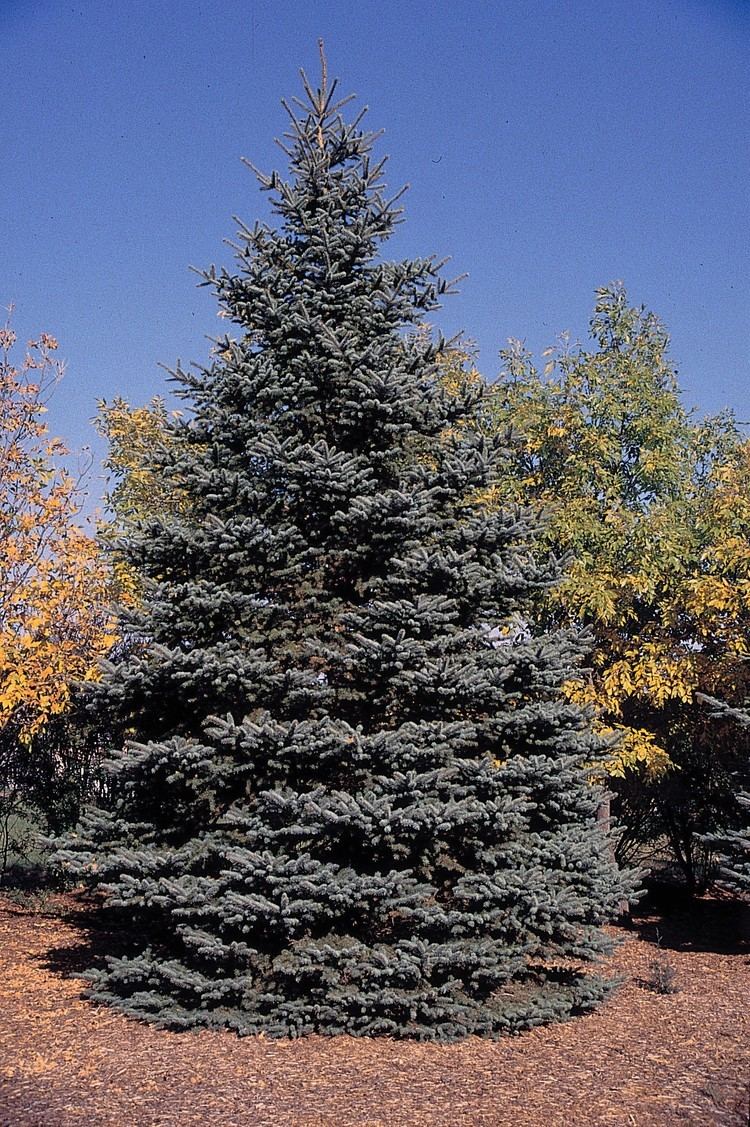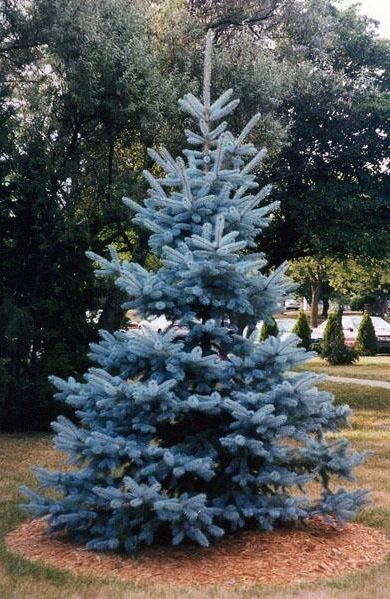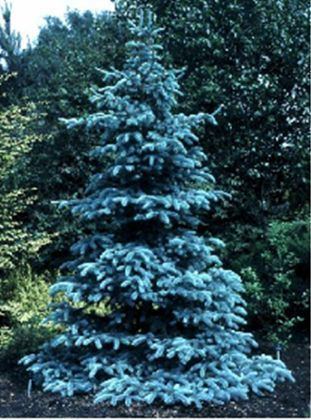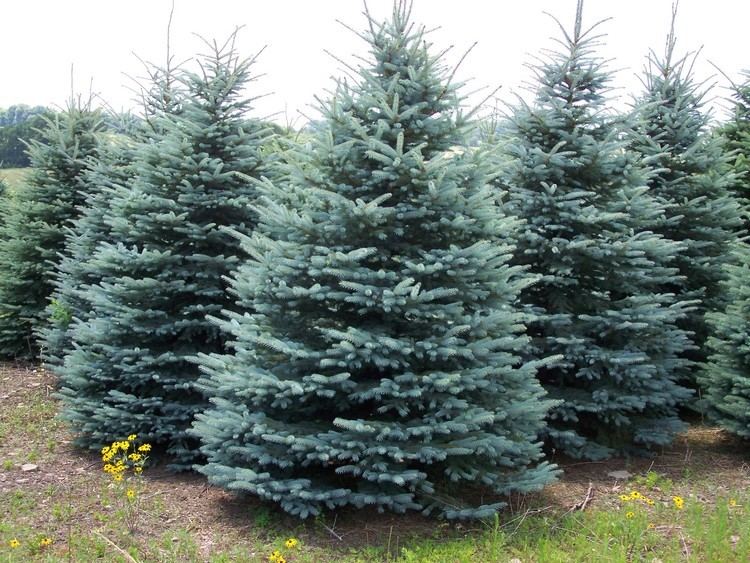Rank Species | Division Pinophyta Scientific name Picea pungens Higher classification Spruce | |
 | ||
Conservation status Least Concern (Population stable) Similar Spruce, White spruce, Fir, Norway spruce, Abies nordmanniana | ||
Plant a blue spruce tree
The blue spruce, green spruce, white spruce, Colorado spruce, or Colorado blue spruce, with the scientific name Picea pungens, is a species of spruce tree. It is native to the Rocky Mountains of the United States. Its natural range extends from northern New Mexico to Wyoming, but it has been widely introduced elsewhere and is used as an ornamental tree in many places far beyond its native range. The blue spruce has blue coloured needles and is a coniferous tree.
Contents
- Plant a blue spruce tree
- Blue spruce tree planting kentucky mountain acres
- Description
- Cultivation
- Pests and diseases
- Cultivars
- Uses
- References

Blue spruce tree planting kentucky mountain acres
Description

In the wild, Picea pungens grows to about 23 m (75 ft), but when planted in parks and gardens it seldom exceeds 15 m (49 ft) tall by 5 m (16 ft) wide. It is a columnar or conical evergreen conifer with densely growing horizontal branches. It has scaly grey bark on the trunk with yellowish-brown branches.

Waxy grey-green leaves, up to 3 cm (1 in) long, are arranged radially on the shoots which curve upwards. The pale brown cones are up to 10 cm (4 in) long.
The specific epithet pungens means "sharply pointed", referring to the leaves.
The blue spruce is the State Tree of Colorado.
Cultivation

Picea pungens and its many cultivars are often grown as ornamental trees in gardens and parks. It is also grown for the Christmas tree industry.
Pests and diseases

The blue spruce is attacked by two species of Adelges, an aphid-like insect that causes galls to form. Nymphs of the pineapple gall adelgid form galls at the base of twigs which resemble miniature pineapples and those of the Cooley's spruce gall adelgid cause cone-shaped galls at the tips of branches. The larva of the spruce budworm eat the buds and growing shoots while the spruce needle miner hollows out the needles and makes them coalesce in a webbed mass. An elongated white scale insect, the pine needle scale feeds on the needles causing fluffy white patches on the twigs and aphids also suck sap from the needles and may cause them to fall and possibly dieback. Mites can also infest the blue spruce, especially in a dry summer, causing yellowing of the oldest needles. Another insect pest is the spruce beetle (Dendroctonus rufipennis) which bores under the bark. It often first attacks trees which have blown over by the wind and when the larvae mature two years afterwards, a major outbreak occurs and vast numbers of beetles attack nearby standing trees.

The blue spruce is susceptible to several needle casting diseases which cause the needles to turn yellow, mottled or brown before they fall off. Various rust diseases also affect the tree causing yellowing of the needles as well as needle fall. Canker caused by Cytospora attacks one of the lower branches first and progressively makes its way higher up the tree. The first symptom is the needles turning reddish-brown and falling off. Meanwhile, patches of white resin appear on the bark and the branch eventually dies.
Cultivars
Common cultivars (those marked agm have gained the Royal Horticultural Society's Award of Garden Merit):-
Uses
The Navajo and Keres Native Americans used this tree as a traditional medicinal plant and a ceremonial item, and twigs are given as gifts to bring good fortune. In traditional medicine, an infusion of the needles is used to treat colds and settle the stomach. This liquid is also used externally for rheumatic pains. Early people used their wood for building.
